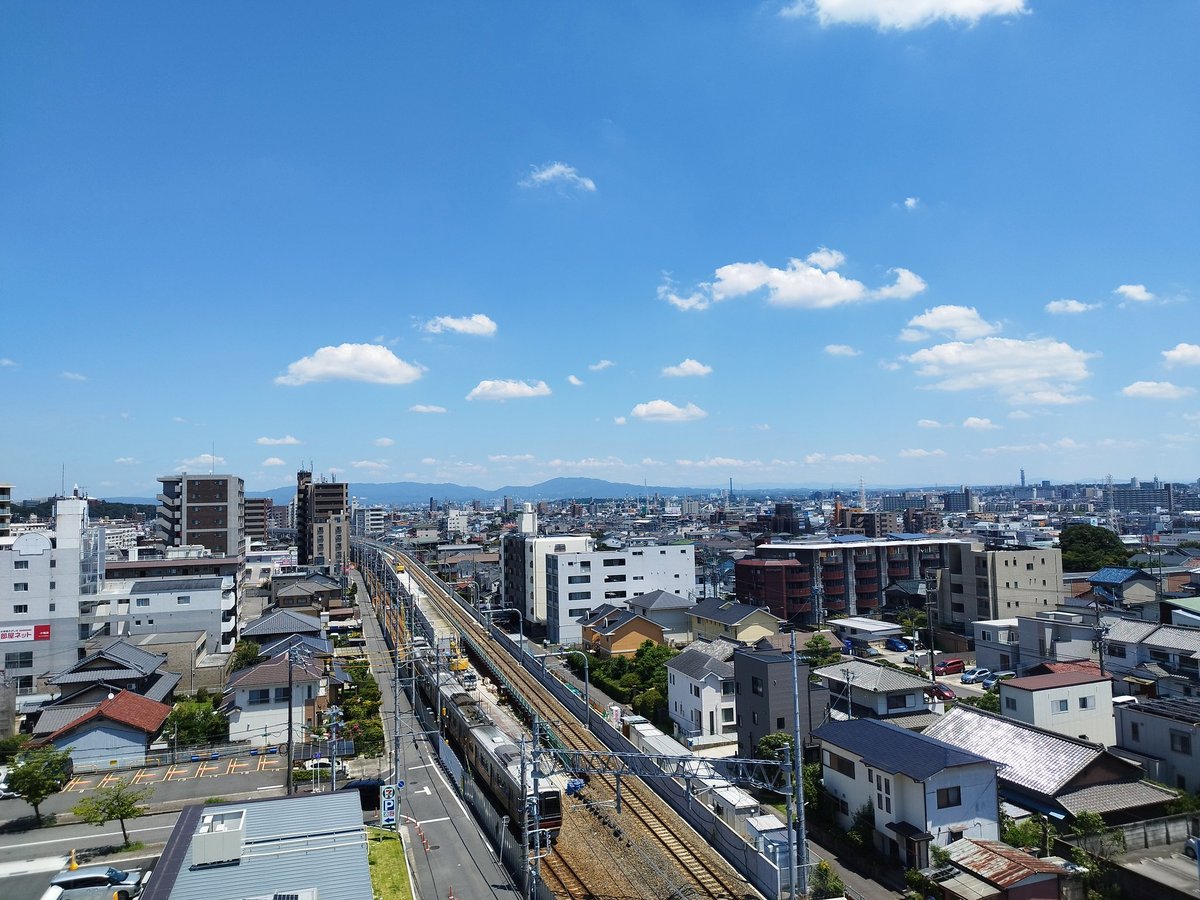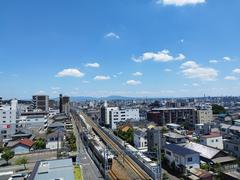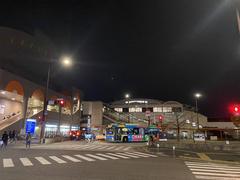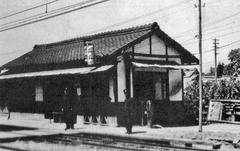
Complete Guide to Visiting Obata Station, Nagoya, Japan: Visiting Hours, Tickets, and Nearby Attractions
Date: 15/06/2025
Introduction
Obata Station, located in Nagoya—Japan’s dynamic fourth-largest city—serves as a vital gateway for both daily commuters and travelers eager to immerse themselves in the region’s rich cultural tapestry. Established during the late 19th and early 20th centuries as part of the city’s railway expansion, Obata Station has played a crucial role in supporting urban growth and connecting Nagoya’s suburban neighborhoods to its vibrant core. With easy access to historical landmarks such as Nagoya Castle, the Tokugawa Art Museum, and Atsuta Shrine, Obata Station is the perfect starting point for discovering the unique blend of tradition and modernity that defines Nagoya (World Travel Guide; Britannica).
This comprehensive guide details everything you need to know for your visit, including operating hours, ticketing options, accessibility features, and top nearby attractions. Whether you’re interested in Nagoya’s historic sites, local cuisine, or family-friendly activities, Obata Station offers seamless connectivity and practical amenities for every traveler.
Contents
- Introduction
- History and Development of Obata Station
- Urban and Economic Impact
- Station Layout and Facilities
- Visiting Hours and Ticket Information
- Accessibility Features
- Modernization and Sustainability Initiatives
- Top Nearby Attractions
- Cultural and Community Significance
- Integration with the Nagoya Transit Network
- Visitor Experience and Tips
- Frequently Asked Questions (FAQ)
- Conclusion and Travel Resources
History and Development of Obata Station
Obata Station’s origins are closely tied to Nagoya’s transformation from a castle town to an urban powerhouse. The construction of Nagoya Castle in 1610 by Tokugawa Ieyasu laid the foundation for the city’s strategic importance (World Travel Guide). The subsequent development of the railway network in the late 19th century further accelerated Nagoya’s growth, making Obata Station a key player in suburban expansion and industrial connectivity (Britannica).
Urban and Economic Impact
Strategically positioned, Obata Station enabled the growth of walkable, high-density neighborhoods while facilitating daily commutes and supporting local businesses. Its integration with Nagoya’s robust transit system—including connections to the Shinkansen and local lines—cemented its role in the city’s economy, linking residential areas with major commercial and cultural zones (Britannica; Sustainably Forward).
Station Layout and Facilities
Platform and Structure
Obata Station is a local commuter stop on the Meitetsu Seto Line, featuring two opposed side platforms. Passengers cross between platforms via a pedestrian overpass with stairs—note there are no elevators or escalators. Each platform fits up to six-car trains, supporting both local and rapid services (Meitetsu).
Ticketing
The station is unstaffed, relying on automated ticket vending machines that accept cash and IC cards like Manaca for quick, contactless travel. Entry and exit are managed via IC-compatible turnstiles.
Facilities Overview
- Covered waiting areas on each platform
- Bicycle parking is typically available near entrances
- No on-site restrooms; use nearby convenience stores or larger stations
- Security: Surveillance cameras and emergency intercoms provide safety
Accessibility
Due to the stair-only overpass, Obata Station has limited accessibility for those with mobility needs. For barrier-free travel, use nearby larger stations such as Sakaemachi or Ozone (Meitetsu Accessibility Guide).
Visiting Hours and Ticket Information
- Operating Hours: Daily from approximately 5:00 AM to midnight; check train schedules for precise timings.
- Ticket Purchase: Use automated machines for single-ride tickets or recharge Manaca IC cards; both accepted for entry.
- Ticket Types:
- Single journey
- Day passes (for unlimited travel within certain zones)
- IC cards: Manaca, TOICA, Suica
For up-to-date fares and schedules, consult official operator websites or mobile apps (Meitetsu).
Modernization and Sustainability Initiatives
Obata Station has seen substantial upgrades in recent years, including digital ticketing, real-time train information displays, and eco-friendly architectural features. These efforts are part of Nagoya’s broader commitment to sustainable, accessible urban transit (Nagoya Info; Greater Nagoya Initiative). Planned enhancements include expanded digital services and further green initiatives.
Top Nearby Attractions
Obata Station provides easy access to some of Nagoya’s most celebrated historical and cultural sites:
- Nagoya Castle: Iconic 17th-century castle, famous for its golden shachihoko ornaments and beautiful gardens (Plan My Japan; Nagoya Castle Official Website).
- Atsuta Shrine: Over 1,900 years old, home to the legendary Kusanagi-no-Tsurugi sword (MATCHA).
- Tokugawa Art Museum & Garden: Rich collection of samurai artifacts and a serene Japanese garden (Klook).
- Higashiyama Zoo and Botanical Gardens: One of Japan’s largest, ideal for families (Klook).
- Osu Kannon Temple & Shopping District: Bustling area for street food, souvenirs, and local festivals (Klook).
- SCMAGLEV and Railway Park: A must for railway enthusiasts, featuring shinkansen and interactive exhibits (Klook).
- Port of Nagoya Public Aquarium: Large marine life exhibits and dolphin shows (Port of Nagoya Public Aquarium).
- Obata Ryokuchi Park: Just a short walk from the station; offers gardens and recreation areas.
Cultural and Community Significance
Obata Station is more than a transit point—it’s a vibrant community hub serving residential neighborhoods, local schools, and shopping streets. Seasonal events, such as local festivals and markets, frequently center around the station, reflecting its deep integration with community life (Nagoya Info).
Integration with the Nagoya Transit Network
Obata Station is seamlessly integrated with Nagoya’s extensive network of JR Central Lines, Meitetsu, Kintetsu, and city buses. This connectivity enables easy transfers to central attractions and regional destinations, making it an ideal base for both local exploration and day trips (Japan Experience; Plan My Japan; Corritrip).
Visitor Experience and Practical Tips
- Best Times: Visit mid-morning or early afternoon to avoid commuter crowds; weekends are great for local events.
- Dining: Explore traditional Nagoya cuisine—such as hitsumabushi and miso katsu—in nearby districts like Osu.
- Facilities: Use coin lockers at major stations for luggage storage; free Wi-Fi is available at many attractions.
- Safety: Stations are secure and well-monitored; emergency intercoms are present on platforms.
- Etiquette: Queue in an orderly fashion, let passengers exit first, and keep noise to a minimum.
- Navigation: Google Maps and Japan Transit Planner are reliable; tourist info centers at major stations offer English assistance.
Frequently Asked Questions (FAQ)
Q: What are Obata Station’s opening hours?
A: The station operates from 5:00 AM to midnight daily. Ticket counters may have shorter staffed hours.
Q: Can I use IC cards like Manaca or Suica at Obata Station?
A: Yes, IC cards are accepted for seamless travel.
Q: Is the station accessible for travelers with disabilities?
A: The main station lacks elevators; travelers needing barrier-free access should use larger nearby stations (Meitetsu Accessibility Guide).
Q: Are there restrooms at Obata Station?
A: No, plan to use facilities at convenience stores or larger stations.
Q: What are the best attractions near Obata Station?
A: Nagoya Castle, Atsuta Shrine, Tokugawa Art Museum, and Osu Shopping District are all easily accessible.
Conclusion
Obata Station stands as a practical and welcoming hub in Nagoya, perfectly positioned to launch your exploration of the city’s historical sites, parks, and cultural experiences. With its robust ticketing options, clear signage, and integration into Nagoya’s transit system, the station offers visitors a seamless travel experience. While its facilities are basic, its proximity to major attractions and local amenities ensures a rewarding visit.
For the latest updates on operating hours, ticketing, and local events, consult the official Meitetsu website and consider using travel apps like Audiala. Make the most of your Nagoya adventure by starting your journey at Obata Station!
Related Articles
- Exploring Nagoya Castle: History and Visiting Tips
- Top 10 Must-Visit Markets in Nagoya
- Sustainable Transportation in Japan’s Urban Centers
Sources
- World Travel Guide
- Britannica
- Nagoya Info
- Sustainably Forward
- Japan Experience
- MATCHA
- Plan My Japan
- Rome2Rio
- Klook
- Meitetsu
- Greater Nagoya Initiative
- Nagoya Info: Events
- Corritrip
- Nagoya Castle Official Website
- Port of Nagoya Public Aquarium



























